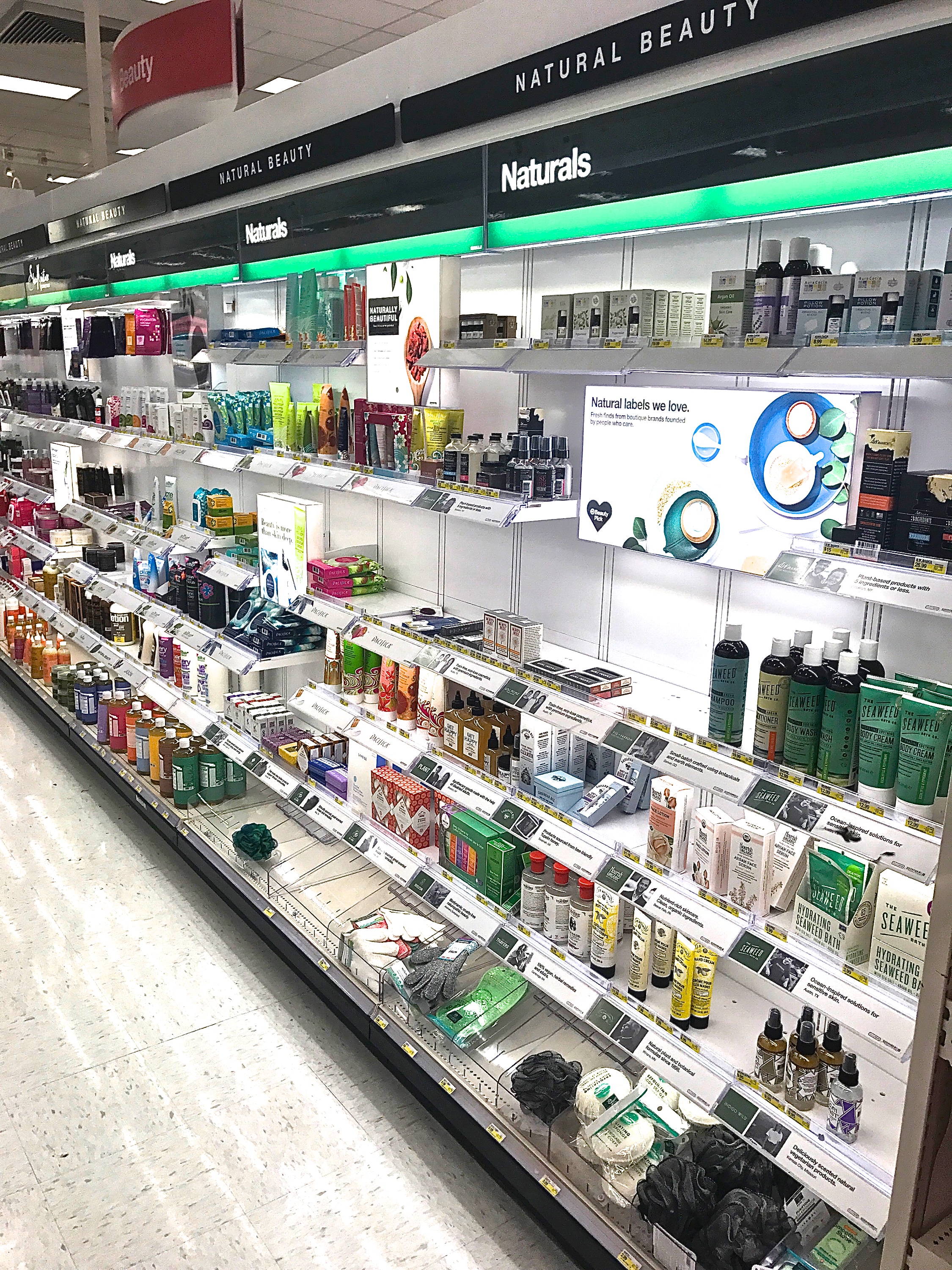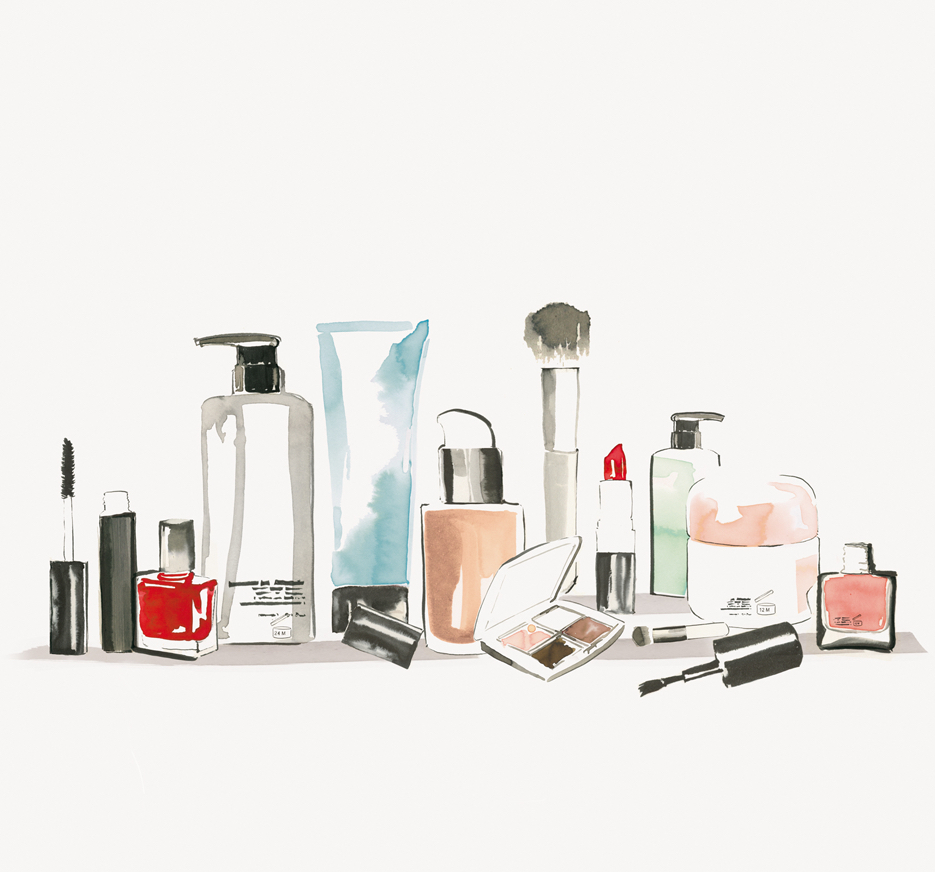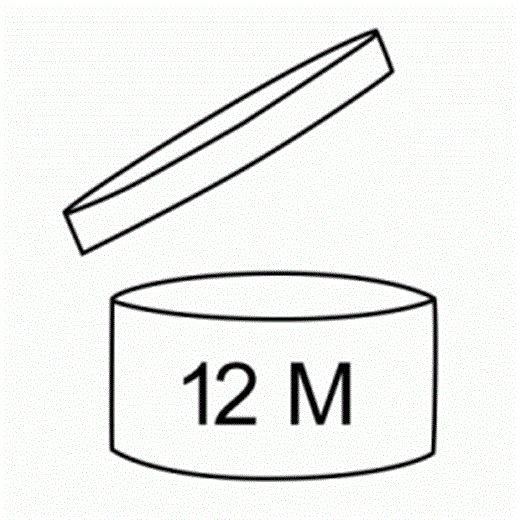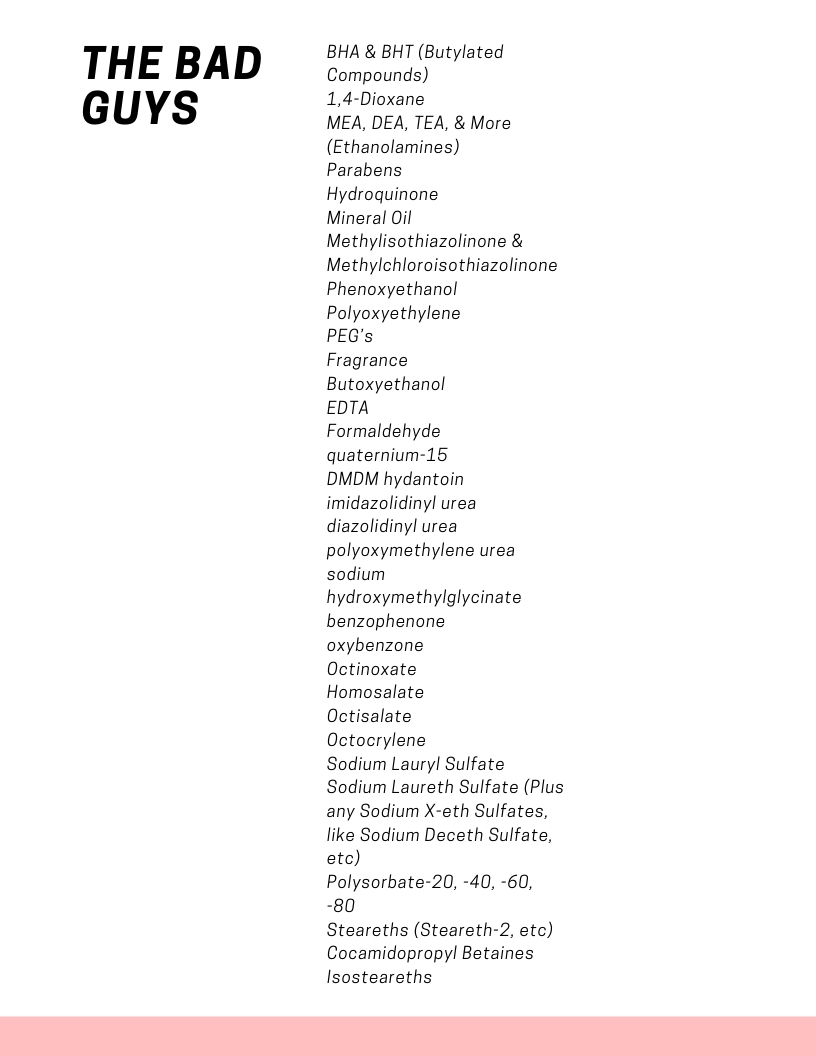
If you’ve been following along with my ‘How To Read A Label’ series, then you probably remember the first one in the series, where a brand founder/formulator gave us some label basics and the last one, where I walk you through a real label and show how to get started on becoming label literate. Since my last post, I’ve gotten a ton of questions, especially about ingredients, so today I’m going to tackle some of them. There’s even a handy pocket guide of ingredients to avoid for you at the end!
Ingredients can be tricky. From contamination issues with seemingly innocent ingredients (hello grapefruit seed extract) to undisclosed by-products created during processing, it can seem daunting to try to get the full picture of an ingredient. I listed my favorite resources I use to check ingredients in my last post, but we’ll dive in a little deeper on a few specific ones I’ve gotten the most questions on.
How To Read a Label Part III: Ingredients Decoded
What are ethoxylated ingredients?
Ethoxylated ingredients are made through a chemical reaction with ethylene oxide, which creates the carcinogenic chemical by-product 1,4 Dioxane during the process. The final ingredient then may contain this harmful by-product but when you read the label it won’t be listed- as per FDA standards, only the actual ingredient has to be listed, not anything it’s contaminated with. This carcinogen and nerve toxin gets to hitch a piggyback ride right into your shampoo without you knowing it. Kind of tricky, right?
It’s very common to see these ingredients in shampoo, bubble bath, body wash, laundry detergent and more. To spot them, look out for ingredients containing PPG, PEG, polysorbate, and ingredients that end in –eth such as laureth, steareth, ceteareth. I’ll include some common ones in a list at the end of this post.
Is phenoxyethanol safe?
This is quite a controversial ingredient, but for me, the answer is no, it’s not safe. It’s a preservative used in cosmetics and some natural brands use it and claim it to be safe the amounts they use it in. Though it hasn’t been studied exhaustively, there is ample evidence that it’s unsafe, especially for small children and babies.
First and foremost, phenoxyethanol happens to be an exothylated ingredient, which we just went over above. If that’s not enough, a green formulator I respect with a chemistry background gives a full break down here of the studies showing it’s harmful and its chemical composition.
Are all preservatives harmful?
Nope! In fact, it’s harmful not to have them. With few exceptions, most formulas with any water-based ingredients need to have some sort of preservative, or mold and bacteria would run rampant before you’d likely had a chance to use the product. Not only is that icky, but it can cause breakouts or possibly even make you sick. The harsh preservatives that do things like mimic hormones, disrupt your nervous system, and worse, have given the word preservative a bad name. But, the key is to find products using safe preservatives.
On that note, how can you tell when your all natural face cream has expired? (I’ve gotten this question a lot!) On the label of any skincare product, you should see a jar slightly open with a number followed by M, like the one above. The number is how many months the product should be good after opening.
What’s the deal with grapefruit seed extract?
Some people claim it to be anti-fungal and anti-bacterial, but a closer look shows this lab-made, highly processed ingredient is usually adulterated with harmful preservatives and harsh ingredients. In a study of 6 brands, 5 were shown to contain the preservative benzethonium chloride and 3 of those brands also contained the preserving substances triclosan and methyl parabene. The 6th brand had no harmful substances, but also no antimicrobial activity could be detected on that one. So without being laced with harmful preservatives, it had zero preservative power. This ingredient isn’t natural and is one to avoid.
Cheat Sheet
Ok, for those asking for a handy pocket guide or quick reference for ingredients to avoid, I’ve got you covered. Feel free to Pin, screen shot, or save it so you can use it for quick reference when you’re shopping. Your personal opinion may vary on some of these and this is of course just a general guide of common ingredients you’ll come across, rather than an all-encompassing list of every single harmful substance on the planet.
Happy Label Reading!










